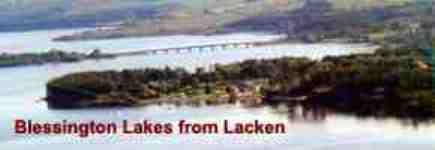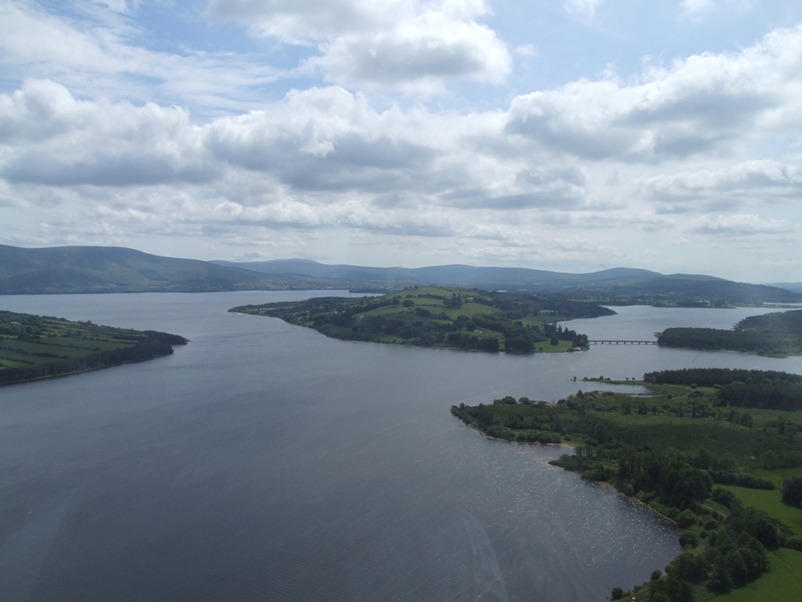|
|
The organizers have agreed to let yours truly drive an old Ferguson. You know the type that Richie Kavanagh wrote a song about: It’s so many years ago I was bought up in Dublin At the RDS Spring show. I’m a lovely little tractor An’ I look so very cute; Not like the tractor of today, That great big ugly brute. There is a stipulation, of course, that I will wear the costume of a “’fifties farmer” (my spouse says that I dress like one all the time) and I have to promise to turn down my Wellingtons. However I was short one item of apparel which is mandatory for such an event until Adrian Gallagher, of Career Wear Limited, in Letterkenny, came to the rescue. I am now the proud possessor of a navy bib-and-brace overall (affectionately known in our circles as a “Dungarees”) The run will take its usual route (see pic at bottom of page) through Lacken over Knockeiran Bridge and into Blessington via Red Lane for the Carnival & Parade. The run will then head out the Baltinglass Road, turn left for Valleymount and stop for dinner on Baltyboys Hill while enjoying the panoramic views of the Wicklow Mountains, the plains of Kildare and the vast expanse of Blessington Lake.
Lakes have played a prominent part in life and literature the world over. The lake of Galilee could be seen as the cradle of Christianity. The lakes of Killarney have filled the coffers of hotels and guesthouses for a century and a half and in “That They May Face The Rising Sun” John McGahern fits every human emotion, and a few vices, around the lake. Sean O’ Faolain’s “Lovers Of The Lake” is a fairly comprehensive catalogue of human feelings. Every inland expanse of water from “Lough Neagh’s banks,where the fisherman strayed” to “The lakes of Ponchartrain” has inspired poets, songwriters and other layabouts. If you are still reading this you are probably asking, “what’s this eejit on about? Haven’t we the most beautiful lake of all here on our doorstep?” We do. But we didn’t have a natural lake (we had a glacial lake but that was before even my time) so what happened? The river Liffey rises near Sally Gap about 1800 feet above sea-level. The King’s River rises at the south side of Mullacleevaun. The conflux of the two was at Inchiclare, near Blessington. This “meeting of the waters” was not as famous as that in the backs of Wicklow, immortalised by Thomas Moore, but I believe it was just as beautiful. Up to the point where the rivers merged the King’s River was the larger of the two so logically the more dominant one should have retained its name and the Kings River should be flowing under O ‘Connell Bridge. It would appear that there were politics involved. One landlord had more clout than the other or maybe the equivalent of “brown envelopes” changed hands. I don’t know. According the J.W. DeCoursey, author of “The Liffey In Dublin”, it has been called the Liffey since the sixth century, or even earlier. Anyway, maybe it’s just as well. If the King’s River had kept its name “Finnegans Wake” would be even more obscure and to ask a young one to accompany you, “down by the King’s River side “ just wouldn’t have that romantic ring to it. The demand for electricity had risen to such an extent, by the nineteen thirties that the ESB had to look for a river to harness as a Hydro-Electric scheme similar to Ardnacrusha. The Board had ample powers of compulsory acquisition and opened negotiations with the landowners of the area from a strong position. As one commentator put it; “The element of compulsion and the rapidity with which the ESB moved to secure possession awakened dormant images of Cromwell’s soldiers and rapacious landlords. Landowners were dismayed by the valuation placed on their farms, the semi- state body measuring value in purely monetary terms . . . Many argued they would lose a family home that rooted them to this valley, for generations past the family of Shannons having lived there for over 600 years......” The price offered was flatly refused by indignant farmers and the case went to arbitration. Decades later, in an RTE interview my father, the late Tim Lennon, said of this adjudication: “The arbitrator was the Devil and the coort was in Hell”. (With a father like that you can understand how I don’t have much faith in the outcome of tribunals and such). Eventually an average price of £9 per acre, with £100 disturbance money per farm, was paid. In all 55 residential holdings and 12 labourers’ cottages were evacuated and 6,500 acres were flooded.. The dam and bridges were constructed and at 10 A.M. on 03rd March 1940 the sluice gate at Poulaphouca was closed. As the water level steadily rose Poet, Austin Clarke (whose people came from Blackditches Hill) wrote: “Now that the reservoir dam at Poulaphouca has been completed, flood is rising to the last ridge below Valleymount and another sky has tumbled into the heather. The narrow lands from which my father’s people came have vanished under water and the trout are too heavy to jump”. Further afield one English writer said of the scheme, “Industrialisation is writing Ireland’s epitaph . . .” An uprooted population left their homes with an almost eternal finality. Between the time the dam was sealed and the land was totally submerged an air of sadness hung over the area. This was captured by a local songwriter:
I do remember boyhood days when I was twenty three
As to what lies beneath the rippling waves the myths and legends are growing by the day. Some people believe that there was a village, complete with Church there the bells of which can still be heard ringing. I’m just waiting for someone to ask me where was the Opera-house? Those with a vivid imagination may think hat they can, “ . . . see the round towers of other days in the waves beneath them shining”. There was a Blessed well in Lacken to which many cures had been attributed and the bodies from the old graveyard in Burgage were moved to higher ground but the lake doesn’t conceal Manor Houses, hotels or Japanese gardens. The following people from Ballinahown moved:
From Ballyknockan:
From Baltyboys:
From Humphreystown:
From Monamuck:
From Lacken:
From Valleymount:
The Blessington Lake, today, looks as “natural” as any in the world. Most people, even those who were, “evicted by the ESB” agree that it is a panoramic view. There were, however, a small minority, including my late father, who refused to see any beauty in this intrusion. If you are singing its praises, in the vicinity of Baltyboys, and you hear a whirring sound it will probably be Tim Lennon spinning in his grave.
|
|||||||||||
| Name: Melinda Cohenour | Email: mecohenour@aol.com |
| Comment: Mattie: You know your column is always one of my eagerly awaited pleasures each month. This tale is bitter-sweet, laced with fine Irish poetry and the anguish of loss of homeland. Then............I reach the list of those forced to move and find "JOHN CARROLL moved to County Meath, later Glashina". That was the name of my dearly beloved father. Thank you for another wonderful column. Please keep them coming.... | |
* | * |






